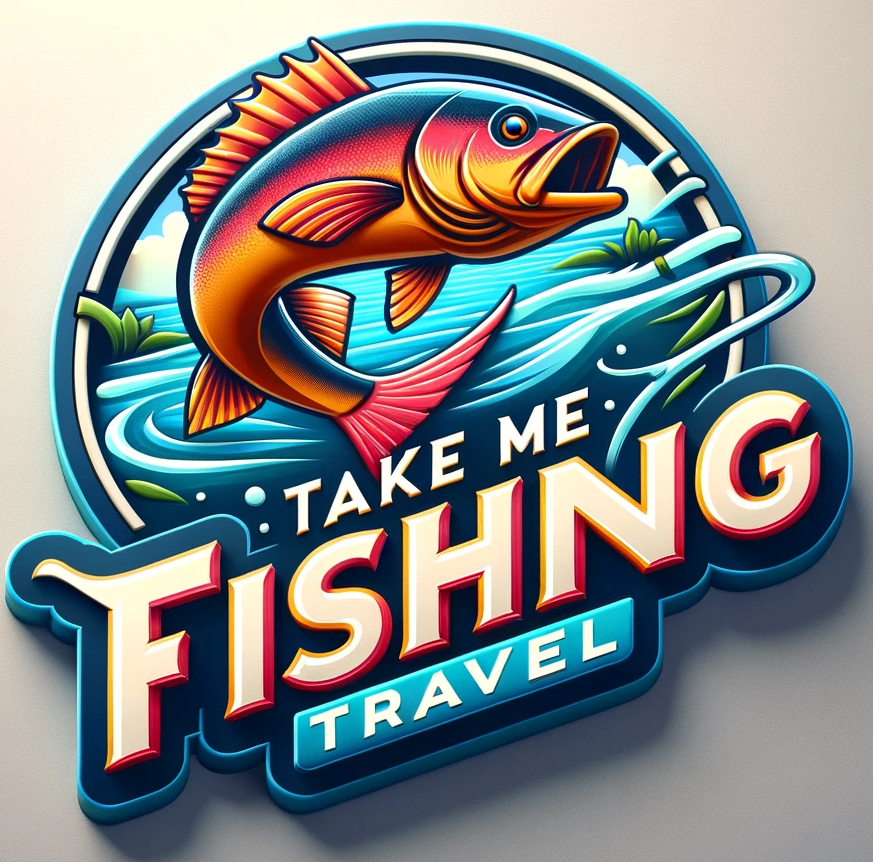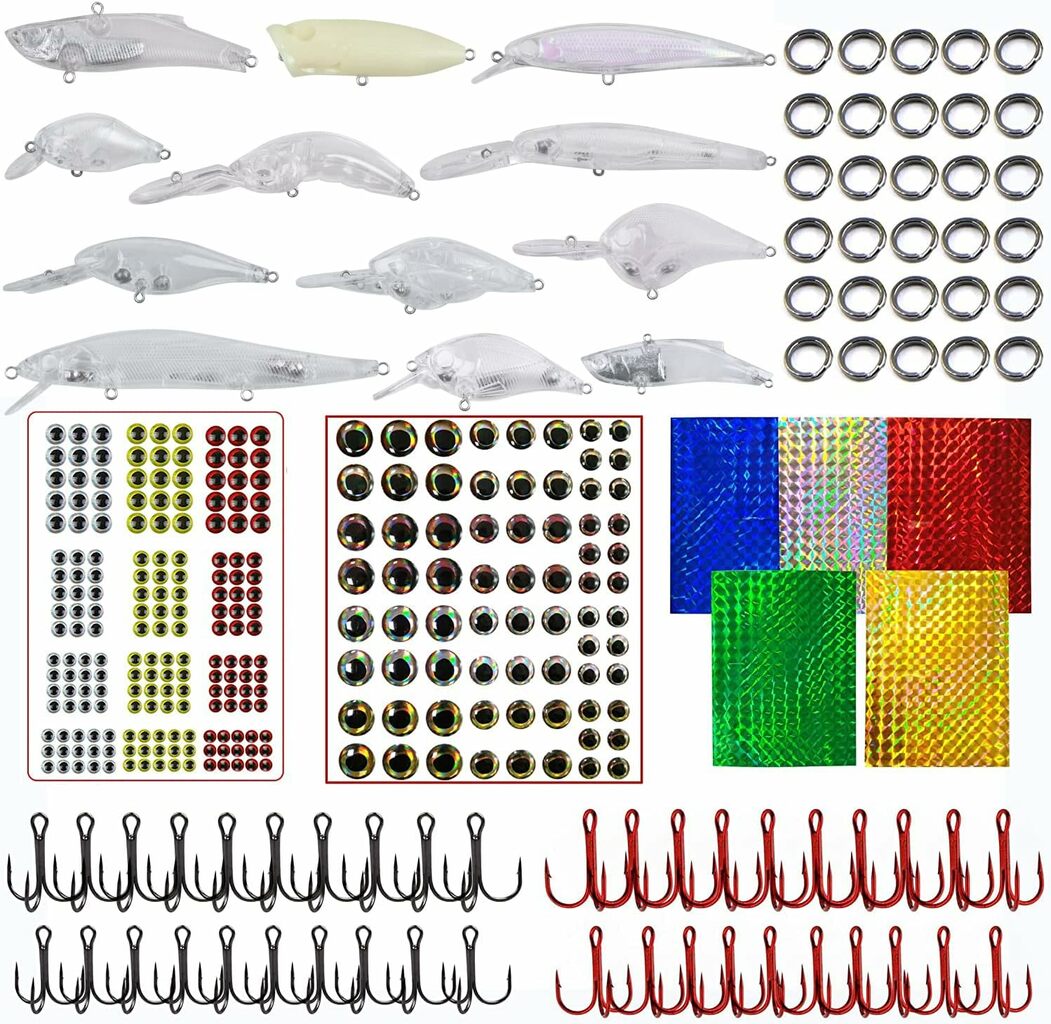“As an Amazon Associate I earn from qualifying purchases.”
Are you tired of spending a fortune on store-bought fishing lures that never seem to deliver the results you desire? If so, then it might be time to venture into the world of homemade fishing lures. Not only can crafting your own lures be a fun and rewarding hobby, but it also allows you to customize your baits to suit the specific needs of your target fish. From gaining more control over the design, color, and movement of your lures, to saving money and tapping into your creative side, homemade fishing lures offer numerous benefits for avid anglers. In this article, we will explore the top 5 homemade fishing kits that can help you kickstart your lure-making journey and enhance your fishing experience. So grab your fishing gear and get ready to dive into the exciting world of homemade fishing lures!
Best option for casting and trolling
The Unpainted Fishing Lures Blank Minnow Crankbaits Hard Bait Bodies Set from JSHANMEI Store is a DIY enthusiast’s dream. These blank lures allow users to customize their own fishing tackle, adding a personal touch to their fishing experience. The kit includes fishing treble hooks and split rings, providing everything needed to complete the lures.
Customers who enjoy the art of lure painting will appreciate the high-quality materials and smooth finish of these blanks. The durable construction ensures that these lures can withstand long hours of casting and reeling in various fishing conditions. Overall, the Unpainted Fishing Lures Blank Minnow Crankbaits Hard Bait Bodies Set is a great addition to any angler’s tackle box, offering endless possibilities for customization and creativity.
Flexible to make any lure you want
Easy to paint and customize
Lures are ready to paint
Comes with everything you need
Good variety of tools and accessories included
Hooks are too light
Hooks could be sharper
Package size: 7.09 x 6.93 x 2.83 inches Style: Custom Fishing treble hooks: 40pcs Weight: 0.21 Kilograms Material: Steel Species: Bass Type: Bionic blank hard lures body
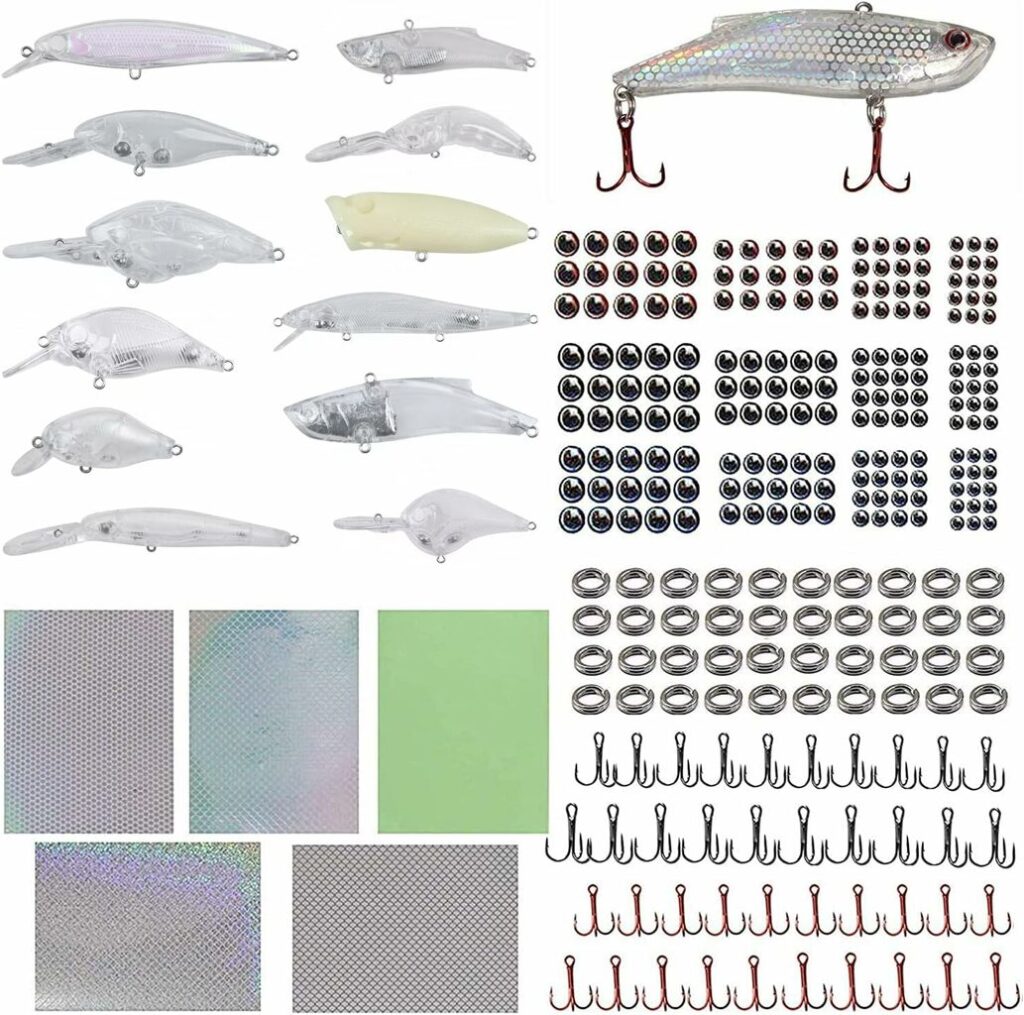
Best unpainted hardbaits for hobbyists
AGOOL DIY Minnow Kit
The Unpainted Fishing Lures DIY Minnow Kit by AGOOL offers fishing enthusiasts a chance to create personalized lures to suit their specific needs. With a set of 363 blank hard crankbait lures, fishing pliers, scissors, treble hooks, split rings, fishing stickers, and 3D eyes, this kit is a complete package for DIY fishing tackle. The lures are perfect for topwater fishing, providing an exciting experience for anglers.
The user-friendly design of the kit allows for easy customization of each lure, giving anglers the ability to experiment with different colors and patterns to attract their desired fish species. The included fishing pliers and scissors ensure convenience during the painting process. Additionally, the treble hooks and split rings provided are durable and attach securely to the lures. Overall, the Unpainted Fishing Lures DIY Minnow Kit by AGOOL is an excellent choice for anglers looking to add a personal touch to their fishing gear.
Comes with hard lures that can be used as is or painted
Different types of lures included
Comes with 12 lure blanks
Comes with 3D eyes
Comes with additional lure-making materials
Requires extra tools and materials
Can be difficult to get the hang of painting
Brand: AGOOL Material: Plastic Size: 8.7 x 5.94 x 3.03 inches Usage: DIY Building Weight: 0.25 Kilograms Target: Bass
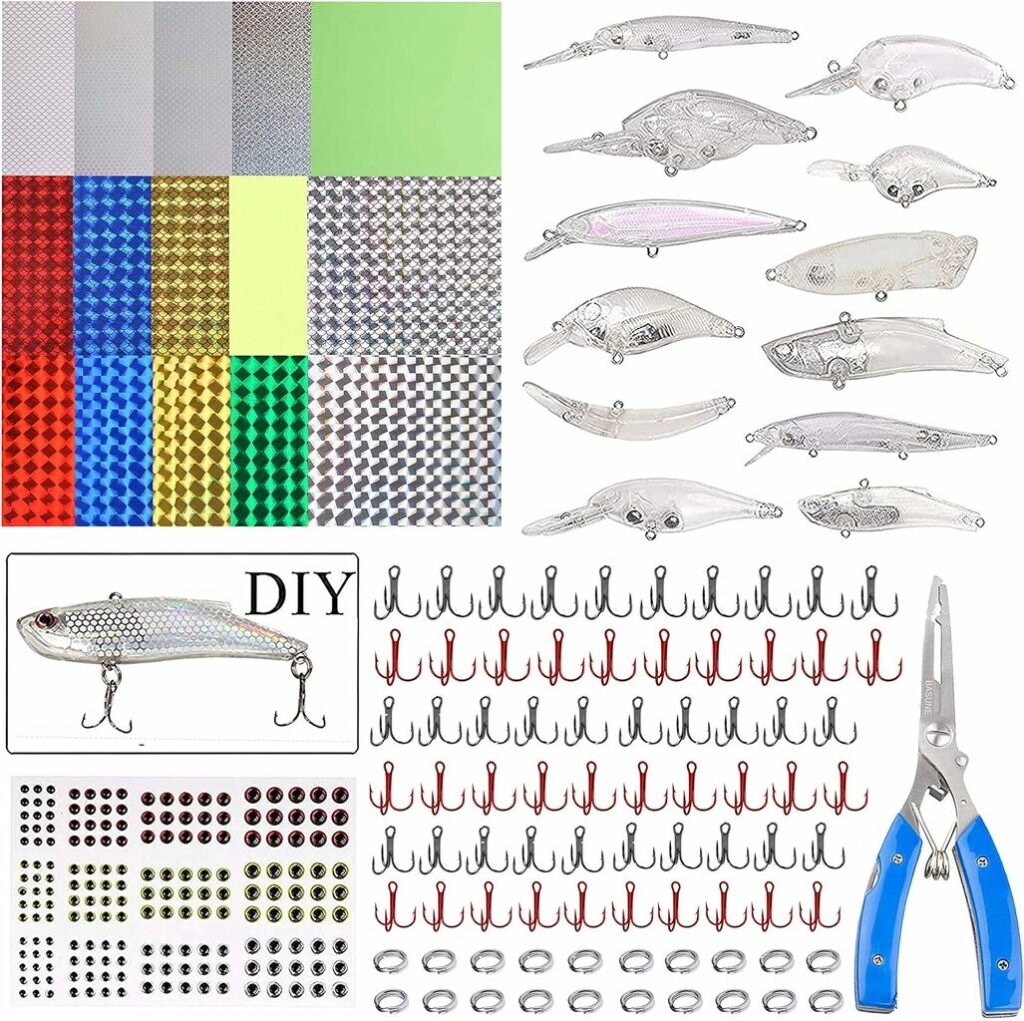
Best Lure Making Kit
AGOOL DIY Unpainted Lure Making Kit
The Unpainted Fishing Lures Making Kit by AGOOL is a fantastic DIY option for anglers looking to customize their topwater lures. With either the 321 or 355pcs sets to choose from, this kit provides an extensive selection of blank hard bait lures, fishing pliers, treble hooks, split rings, lure eyes, stickers, and other fishing tackle essentials. The variety of items included allows for endless creativity and experimentation, making it an excellent choice for both beginners and experienced lure makers. The quality of the materials is top-notch, ensuring durability and longevity. Whether you’re a hobbyist or a professional, this kit is a must-have for anyone who wants to take their fishing game to the next level.
Comprehensive kit with pliers, hooks, split rings, and more
Comes with fishing pliers
Quality fishing pliers included
Comes with everything you need to make lures
Hard to paint
Included lures are all the same
Material: Stainless Steel, Alloy Steel, Lead, High Carbon Steel Weight: 0.41 Kilograms Brand: AGOOL Type: DIY Crankbaits Minnow Kit Style: Modern Packaging: 8.31 x 6.22 x 2.44 inches

Best Crankbait for custom painting
Croch Topwater Lure
The Croch Blank Crankbaits Unpainted Fishing Lure with Tackle Box is a handy addition to any angler’s tackle collection. As a topwater lure, it is designed to create a realistic baitfish appearance, attracting fish with its lifelike swimming action. The fact that the lure is unpainted allows users to customize it according to their preferences, making it a versatile option.
The accompanying tackle box is a nice bonus, offering ample space to store and organize the lures securely. The lures are made of high-quality materials, ensuring durability, so users can rely on them to withstand tough fishing conditions. Overall, the Croch Blank Crankbaits Unpainted Fishing Lure with Tackle Box is a great investment for anglers seeking versatility and durability in their topwater lures.
Comes with eyes, split rings, and tackle box for DIY
Made of high-quality material
Convenient tackle box included
Comes with tackle box, split rings, and 3D eyes to customize lures
Comes with additional accessories
Some lures had imperfections out of the box
Hooks are too small
Style: Multi-type B Weight: 16 ounces Advantages: Great swimming action, easy to color Number of Pieces: 15 Package: 30 pcs blank lures (6 different types) + 100 split rings + 200 3D eyes + free tackle box
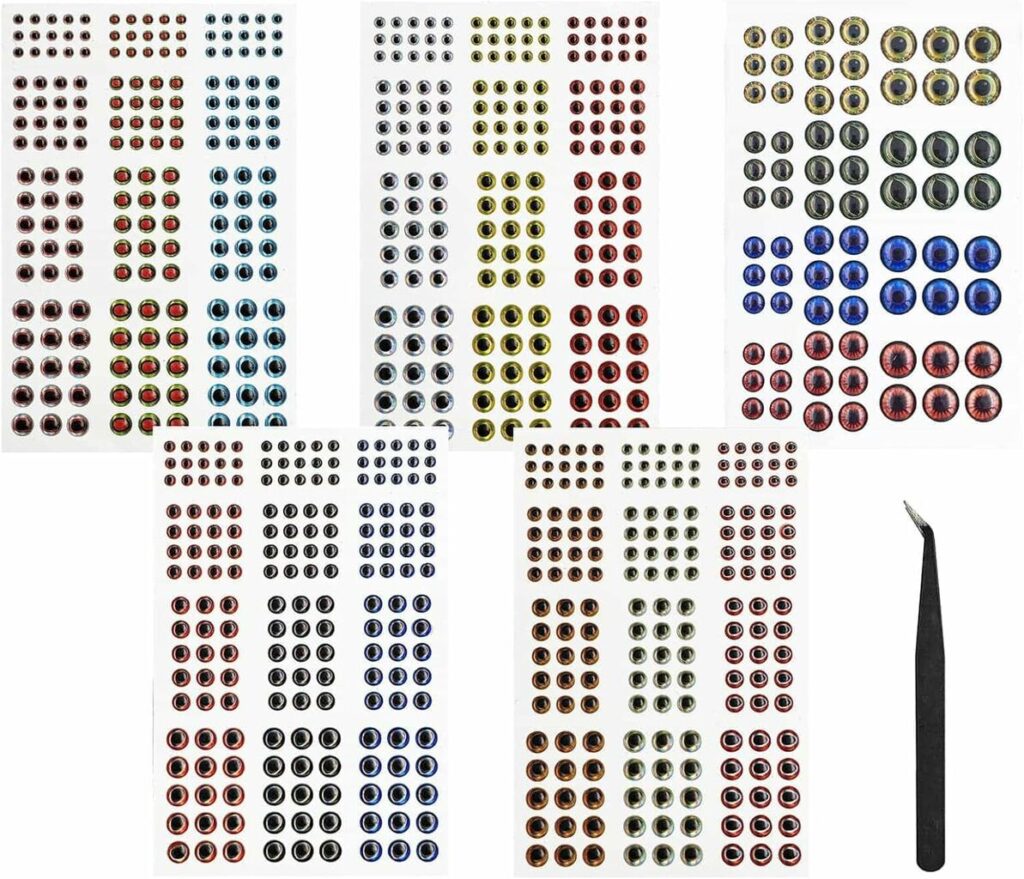
Best fishing eyes for fly tying
Drchoer Fly Tying Holographic Eyes
The Fishing Lure Eye by Drchoer is a versatile and impressive product for any avid angler or craft enthusiast. With options ranging from 2D to 5D holographic fake eyes, in sizes 3mm to 10mm, this product offers a wide variety of lifelike and realistic eye options.
Whether you are looking to tie flies for fishing or create crafts, these artificial eyes are perfect for adding that extra touch of realism and allure to your creations. The quality of the product is exceptional, with the holographic effect adding an extra level of visual appeal. The DIY materials tool makes it easy to use and apply these eyes onto your lures or crafts without any hassle. Overall, the Fishing Lure Eye by Drchoer is a must-have for any fly tying or crafting enthusiast looking to level up their creations.
Wide range of eye sizes available
Choice of 2D/3D/4D/5D with 6mm/7mm/10mm size for 5D option
Comes in 2D, 3D, 4D, and 5D versions
Cheap and unique way to add some extra flash to your flies
Can be used for multiple sizes of lures
Dull adhesive backs
Adhesive could be stronger
Package size: 5.45 x 4.01 x 0.32 inches Technology: 2D/3D/4D/5D Fishing type: Fly Size of sheets: 1 (72Pcs), 4 (732Pcs)
What is a fishing kit?
A fishing kit is a collection of tools and equipment that allows individuals to engage in the activity of fishing. It typically includes items such as fishing rods, reels, lines, hooks, sinkers, and bait. Fishing kits can be purchased from sporting goods stores or online, and they come in various sizes and configurations to meet the different needs and preferences of anglers.
One exciting aspect of fishing kits is the opportunity to create homemade fishing lures. Many avid anglers enjoy the challenge and creativity of making their own lures. Homemade fishing lures can be crafted using a variety of materials, including feathers, beads, rubber skirts, and even household items like bottle caps. These unique lures can sometimes be more effective at attracting certain types of fish, as they mimic natural prey and offer a different presentation than mass-produced lures.
For those who prefer a more personalized and tailored fishing experience, investing in a fishing kit and experimenting with homemade fishing lures can be a rewarding endeavor. It allows anglers to not only better understand the intricacies of the sport but also showcase their creativity. So whether you’re a beginner or a seasoned angler, consider trying out a fishing kit and exploring the exciting world of homemade fishing lures to take your fishing adventures to the next level.
What makes a fishing kit homemade?
Fishing enthusiasts are constantly on the lookout for the best tools and techniques to enhance their fishing experience. While there are plenty of commercially available fishing kits, many anglers prefer to create their own homemade fishing kits. But what exactly makes a fishing kit homemade?
First and foremost, homemade fishing kits include lures that are crafted by the angler themselves. These homemade fishing lures can be made from a variety of materials such as feathers, beads, or even recycled items. The beauty of homemade lures lies in their uniqueness and personal touch. Anglers can customize their lures to mimic the specific baitfish or insects found in their fishing area, increasing the chances of attracting the desired fish species.
Secondly, a homemade fishing kit often includes hand-tied fishing flies. These flies are meticulously crafted by the angler, using different colors and types of feathers, threads, and hooks. The process of tying flies is an art in itself, and many anglers take pride in the skill and creativity required to create these miniature masterpieces. Using hand-tied flies can be highly effective, as they can closely resemble the aquatic insects or small baitfish that fish typically feed on.
Lastly, a homemade fishing kit may also include custom-made fishing rigs and leaders. These are created by assembling various components such as hooks, swivels, and weights to suit the angler’s specific fishing conditions and target species. The advantage of creating your own fishing rigs and leaders is that you can tailor them to your preference, ensuring optimal performance and durability.
In conclusion, a homemade fishing kit is characterized by the use of lures, flies, rigs, and leaders that are carefully crafted by the angler themselves. The ability to create unique and personalized fishing tools is what sets homemade kits apart from their commercial counterparts. So, if you’re looking to add a touch of creativity and personalization to your fishing experience, consider putting together your very own homemade fishing kit.
How do you use a fishing kit?
Fishing is not just a hobby; it’s an art. And like any art form, it requires the right set of tools and techniques. One of the essential tools for any angler is a fishing kit. Whether you’re a beginner or an experienced angler, knowing how to use a fishing kit is crucial to your success on the water.
So, how do you use a fishing kit? It all starts with assembling your gear. A fishing kit typically includes fishing rods, reels, lines, hooks, sinkers, and floats. Once you have your kit ready, you can head to your favorite fishing spot. Remember to check the local regulations to ensure you have the appropriate fishing license.
Now that you’re at the water’s edge, it’s time to bait that hook. While there are various options available, many anglers find success with homemade fishing lures. These lures can be crafted using everyday objects like feathers, beads, or even bottle caps. Not only can homemade lures save you some money, but they can also be tailored to attract specific types of fish.
Once your lure is ready, attach it to the hook and cast your line into the water. Be patient as you wait for a bite. Fishing is all about timing and technique. Remember to reel in slowly, maintaining tension on the line to detect any movements or bites. If you feel a tug or notice the line moving, it’s time to strike and reel in your catch.
Using a fishing kit is not about luck; it’s about skill and understanding the environment. By learning to assemble your gear, bait your hook, and use homemade fishing lures effectively, you’ll be well on your way to becoming a successful angler. So, grab your fishing kit, head to the water, and immerse yourself in the art of fishing.
What are the different types of lures?
When it comes to fishing, the type of lure you use can often be the difference between a successful catch or returning home empty-handed. Lures are designed to mimic the natural movement and appearance of prey, enticing fish to strike. There are several different types of lures to choose from, each with their own unique characteristics and benefits. One popular category is artificial lures, which include plugs, spoons, spinners, and soft plastic baits. These lures are widely available in fishing stores and online, offering anglers a variety of choices to suit their fishing style and target species.
However, for those who prefer a more hands-on approach, homemade fishing lures can be a fun and rewarding option. These lures are crafted by anglers themselves using various materials such as wood, feathers, or even recycled objects. The advantage of homemade lures is that they can be personalized and tailored to specific fishing conditions or individual preferences. Additionally, creating your own lures can be a creative outlet, allowing you to experiment with different designs and colors to attract your desired catch.
Another type of lure often used by anglers is live bait. This involves using live organisms such as worms, minnows, or insects to attract fish. Live bait can be extremely effective as it provides a natural scent and movement that entices fish to bite. However, using live bait requires careful handling and proper maintenance to keep the bait alive and healthy. It’s important to check local fishing regulations to ensure the use of live bait is allowed in your area.
Finally, fly fishing lures are popular among freshwater and saltwater anglers alike. Fly fishing uses lightweight artificial flies made from materials like feathers, fur, and synthetic fibers. The flies are cast using a specialized fly fishing rod and reel, with the goal of imitating insects, small fish, or other aquatic creatures that fish feed on. Fly fishing lures require technique and finesse to successfully entice fish to strike, making it a popular choice for those who enjoy a more challenging and rewarding fishing experience.
In conclusion, the different types of fishing lures offer anglers a wide range of options to suit their fishing style and target species. From artificial lures available in stores to homemade creations, live bait, and fly fishing lures, there is something for everyone. Each type of lure has its own advantages and effectiveness, so it’s important to consider factors such as water conditions, target species, and personal preference when selecting the right lure for your next fishing adventure. So go ahead, experiment with different lures and techniques, and enjoy the thrill of reeling in your next big catch.
Are certain lures better for certain fish?
When it comes to fishing, choosing the right lure can make all the difference in your success. While there is no one-size-fits-all answer to this question, it is generally believed that certain lures work better for certain fish species. Factors such as the fish’s feeding habits, natural prey, and water conditions all play a role in determining what lure will be most effective.
For example, if you’re targeting bass, using a crankbait or a spinnerbait can be highly effective. Bass are predatory fish and are attracted to fast-moving lures that imitate small fish or insects. On the other hand, if you’re after trout, using a small spoon or a fly may yield better results. Trout are more likely to go after lures that resemble the insects that they commonly feed on.
While there are plenty of commercially available fishing lures on the market, many anglers swear by homemade fishing lures. These lures can be customized to suit specific fish species and can often be tailored to mimic the natural food sources found in a particular area. Additionally, making your own lures can be a fun and creative way to enhance your fishing experience.
Ultimately, the best lure for a particular fish species will depend on various factors. It’s important to consider the fish’s habits, the type of water you’re fishing in, and the prevailing conditions. Experimenting with different lures and techniques can help you determine what works best in your local fishing spots. Whether you choose to buy commercially made lures or create your own, the key is to have fun and enjoy the experience of fishing.
Is it better to fish with live bait or lures?
When it comes to fishing, one of the most debated topics is whether using live bait or lures is more effective. Both methods have their pros and cons, and the choice ultimately depends on personal preference and fishing conditions. Live bait, such as worms or minnows, can be appealing to a wide range of fish and can often lead to a higher catch rate. However, using lures can be advantageous in certain situations, especially when targeting specific species or fishing in heavily fished areas.
Using live bait has been a popular choice among anglers for years. The natural movement and scent of live bait can be irresistible to many fish, making it highly effective. Additionally, live bait allows for a more hands-on and interactive fishing experience, as anglers can feel the bite and make quick adjustments to their technique. However, using live bait requires careful handling and storage to keep it alive and fresh, and bait can be messy and inconvenient to transport.
On the other hand, using lures can offer a range of benefits. Lures come in various shapes, colors, and sizes, mimicking the appearance of different prey species, which can entice specific fish. Additionally, lures are reusable and can be used for multiple fishing trips, making them cost-effective in the long run. Many anglers also enjoy the creativity and thrill of using homemade fishing lures, adding a unique and personal touch to their fishing experience. However, using lures requires more skill and practice to effectively mimic the movements of live bait and attract fish.
Ultimately, the decision between live bait and lures depends on factors such as the target species, fishing location, and personal preference. If you enjoy a hands-on fishing experience and want to increase your chances of catching a wide range of fish, live bait might be the way to go. However, if you prefer a more strategic approach and want to target specific species or fish in heavily fished areas, using lures can be a viable option. Whichever method you choose, remember to always adhere to local fishing regulations and practice ethical and sustainable fishing practices.
Can you make your own fishing lures?
If you’re a fishing enthusiast, you’ve probably wondered if you can make your own fishing lures. Well, the answer is yes! Making homemade fishing lures can be a fun and rewarding hobby for any angler. Not only does it give you the opportunity to customize your lures to match the local baitfish, but it can also save you some money in the long run.
Creating your own fishing lures allows you to experiment with different designs and materials to attract your target fish species. Whether you want to make crankbaits, jigs, or soft plastic baits, there are numerous resources available online that provide step-by-step instructions and materials lists. From selecting the right hooks and weights to adding eye-catching colors and patterns, you have complete control over what your lures look like and how they perform.
One of the advantages of homemade fishing lures is that they can be tailored to suit specific fishing conditions or even mimic local prey. You can use your knowledge of the target species’ feeding habits and preferences to create lures that will entice them to strike. Additionally, making your own lures allows you to use environmentally-friendly materials, such as recycled materials or natural elements, reducing your impact on the environment compared to using commercially-produced lures.
While making your own fishing lures requires some practice and patience, the satisfaction of catching fish on your own creations makes it all worthwhile. So, if you’re willing to put in the effort, give it a try! Start small, experiment with different designs, and don’t be afraid to make mistakes. With time and dedication, you may just create a winning homemade lure that outperforms its store-bought counterparts. Happy fishing!
What tools do I need when making lures?
When it comes to making homemade fishing lures, having the right tools can make all the difference. Whether you’re a seasoned angler looking to customize your tackle box or a beginner wanting to try your hand at lure making, having the right tools can help you create lures that are effective and durable.
One of the essential tools you’ll need is a lure making kit. These kits typically include molds, a melting pot, and various materials such as plastic or silicone to create the body of the lure. With a lure making kit, you can easily create different shapes and sizes of lures to attract different types of fish.
Another tool you’ll need is a set of fishing hooks. These hooks are available in various sizes and styles depending on the type of fish you’re targeting. You can attach the hooks to your homemade lures using split rings or by directly embedding them into the lure body. Having a range of fishing hooks will ensure you’re prepared for different fishing conditions.
Additionally, having a range of paints and coatings is important to add visual appeal and protection to your homemade lures. Acrylic paints are commonly used to add vibrant colors and patterns to the lure’s body. Once painted, applying a clear coat of epoxy or sealant will not only provide a glossy finish but also protect the lure from water damage and wear.
In conclusion, when it comes to making your own fishing lures, having the right tools is essential. A lure making kit, fishing hooks, and a range of paints and coatings will help you create high-quality and effective homemade lures. So, gather your tools and get ready to embark on a fun and rewarding lure making journey.
Will fish eat anything?
Fish are known for having a voracious appetite, devouring whatever they can find in their environment. However, the belief that fish will eat absolutely anything is not entirely accurate. While fish do have a wide-ranging diet, their food preferences can vary depending on the species. Some fish have specific dietary requirements, while others are opportunistic feeders.
When it comes to fishing, anglers often experiment with various bait and lures to attract their target species. Homemade fishing lures have gained popularity amongst fishing enthusiasts, who believe that creating their own bait gives them an edge. But do fish truly go for anything, including homemade fishing lures?
The effectiveness of homemade fishing lures largely depends on the materials used, the design, and, most importantly, the species of fish being targeted. Different fish are attracted to different colors, movements, and smells. An angler must understand the behavior and preferences of the fish they are trying to catch in order to create an effective homemade lure.
While fish are generally opportunistic feeders, it’s essential to remember that they are not indiscriminate eaters. They have evolved to recognize and respond to specific stimuli in their environment. So, while homemade fishing lures can be successful in enticing fish, it is crucial to match the lure to the fish’s feeding habits to increase the chances of a successful catch.
“As an Amazon Associate I earn from qualifying purchases.”
